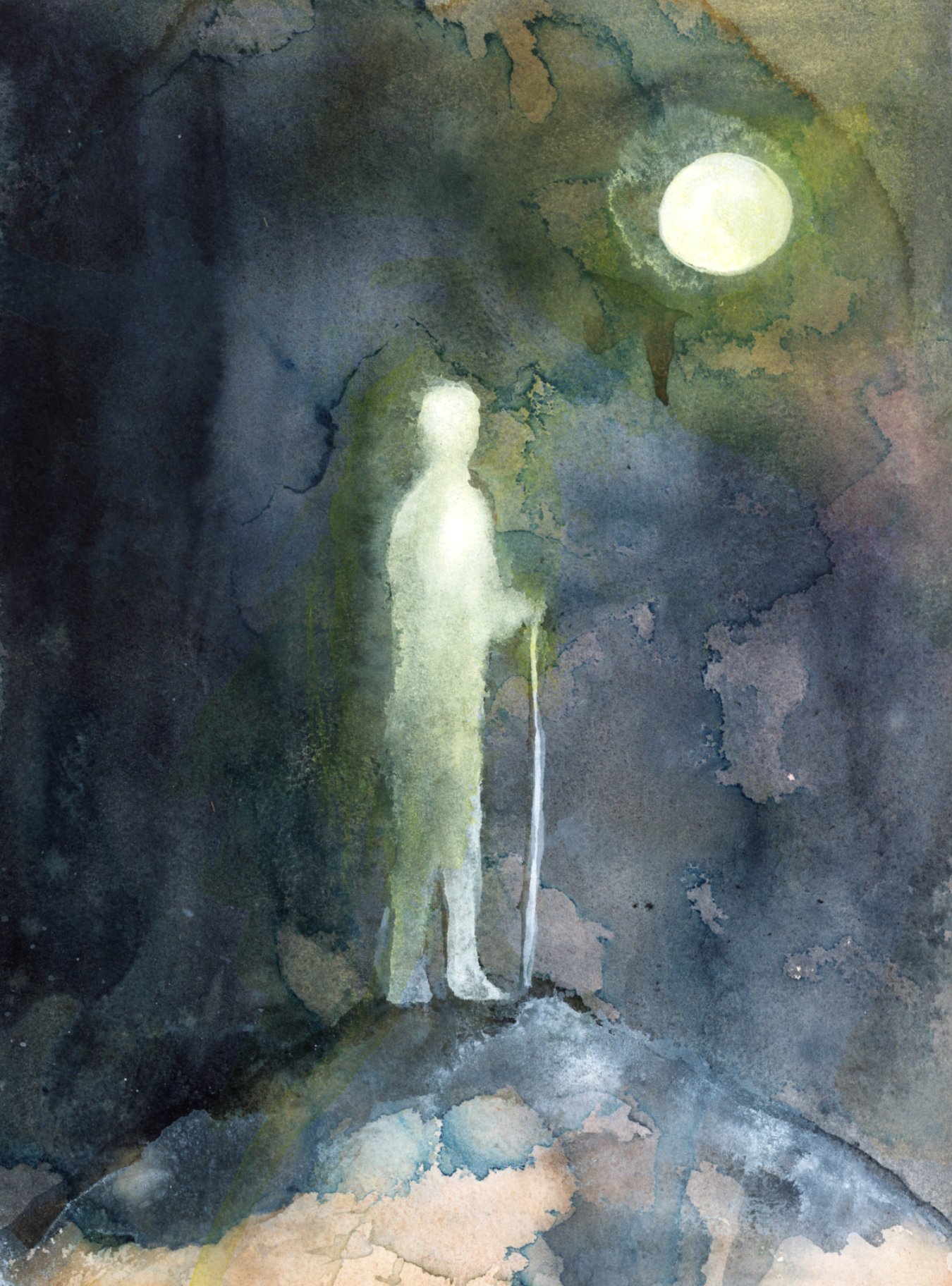The Role Of Solitude In Creativity
All of humanity’s problems stem from man’s inability to sit quietly in a room alone.
- Blaise Pascal (written in 1654. That was before cell phones.)
Moonlight Walk
(Available original)
I used to work a lot with nude models, most of whom were art students. I would engage in unrelated conversation to set them at ease. The conversation would often get around to art school, and my biases against it.
My position, basically, is that a budding artist will learn a lot more, and make a lot more progress in his or her creative endeavors if they would be willing to spend a year alone in a room, painting (or sculpting, or writing novels or poetry – whatever the creative pursuit) for three quarters of their time, and a quarter of their time studying the work of artists in their genre that came before, famous or not, but artists whose work they resonated with.
My thoughts were dismissed summarily. That would encourage me to doubledown and offer the further insight that the reason people actually go to art school is for the social life, for the parties. Artists who are not real artists but pretend artists are fun to hang out with. And art school is full of them. That rarely evoked a positive reaction. “Neanderthal” is one I clearly remember. Or maybe it was two. It was years ago and my memory has suffered the ravages of time.
If I was to embark on this journey again, which I have absolutely no interest in, I would say to these nude models that the issue is fifty percent an obsession with cell phones and fifty percent a related obsession with constant stimulus. Sitting alone in a room is torture for most people, particularly young people. But everyone. As I walk on the beach every day, I notice that about half the people are fully absorbed by their cell phones. It is a beautiful day, the waves are crashing, and people are staring at their cell phone, or talking into them. That’s deplorable unless they are filming my dog Ada romping around on the beach having a wonderful time, which is actually fairly common, and completely understandable.
The architect Sir John Soane made a Hermit’s Parlor in the basement of his house in Lincoln’s Inn Fields. He filled it with Gothic oddments and sat there from time to time to write or muse. Most writers need solitude in order to concentrate; composers do too, though perhaps Mahler was extreme in requiring the cowbells to be muffled as he sat in his hut at the end of the garden in the Austrian Tyrol to write his Third Symphony. The poet, the philosopher, the nature lover, and the seeker after God feel, in Wordsworth’s phrase, that “something far more deeply interfused” which the child making a raft on a pond and setting off to find an unknown island — like Richard Jeffries Bevis in Bevis, the Story of a Boy — also knows, though probably does not articulate. But there is also the resentful hermit, who has eaten sour grapes and is not serene at all, who rejects the world in disgust or with a sense of failure and retreats into a distorted landscape of nightmare, tortured by malice and as often as not, the very rich having a tendency to fall into this category, counting his money. . .
In the modern Western world solitude is undervalued, and the need for it forgotten. To wish to be alone is thought odd, a sign of failure or neurosis; but it is in solitude that the self meets itself, or, if you like, its God, and from there that it goes out to join the communal dance. No amount of group therapy, study of interpersonal relationships, self-improvement exercises, personal training in the gym, can assuage the loneliness of those who cannot bear to be alone.
- Isabel Colegate, A Pelican in the Wilderness: Hermits, Solitaries, and Recluses
The new art journal, Nurturing The Song Within, and the related diary / planner should be mailed in a few days.
These are designed to be important tools on your creative journey.
You can order both here.
. . .
Join Heron Dancers for an exploration of subjects related to creative work each Sunday at 7pm Eastern. More here.


